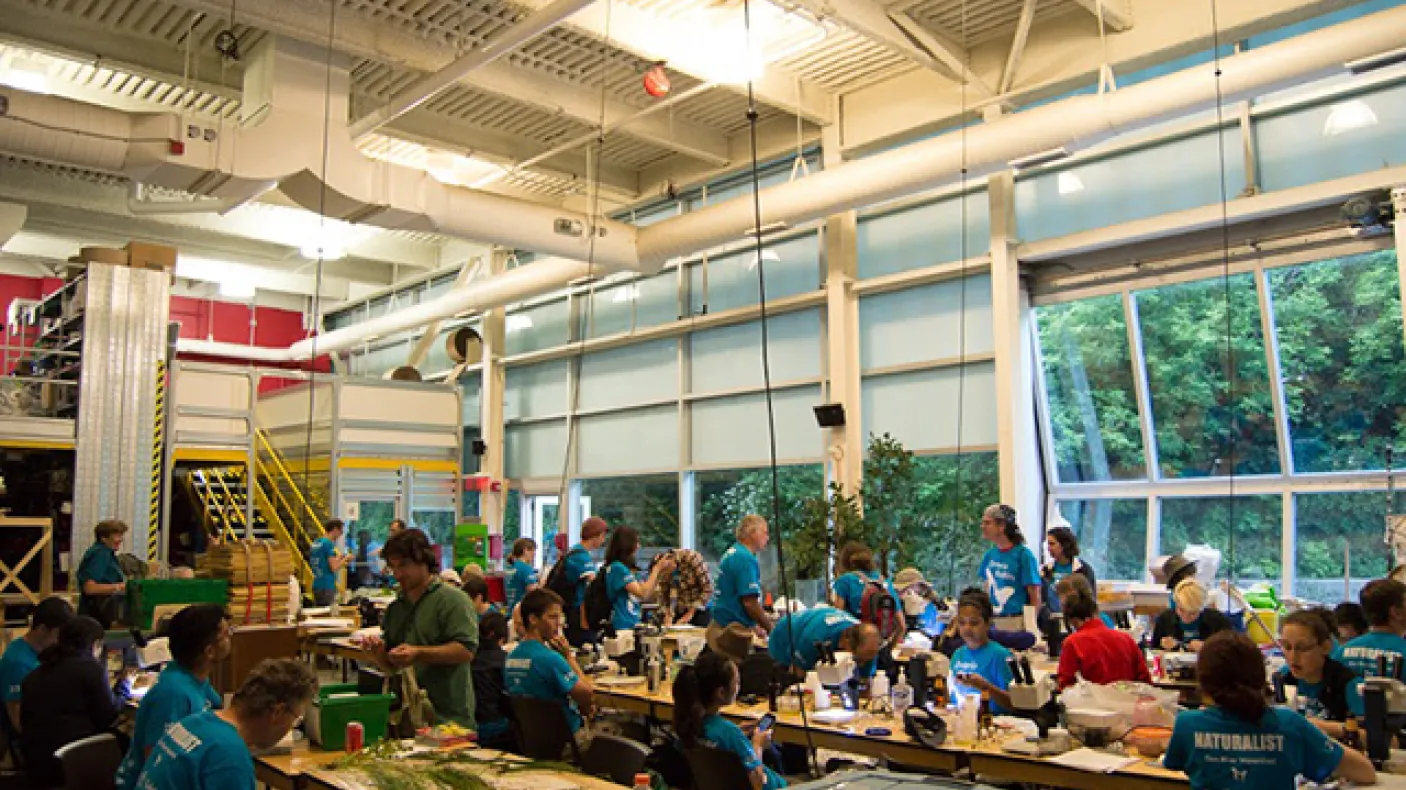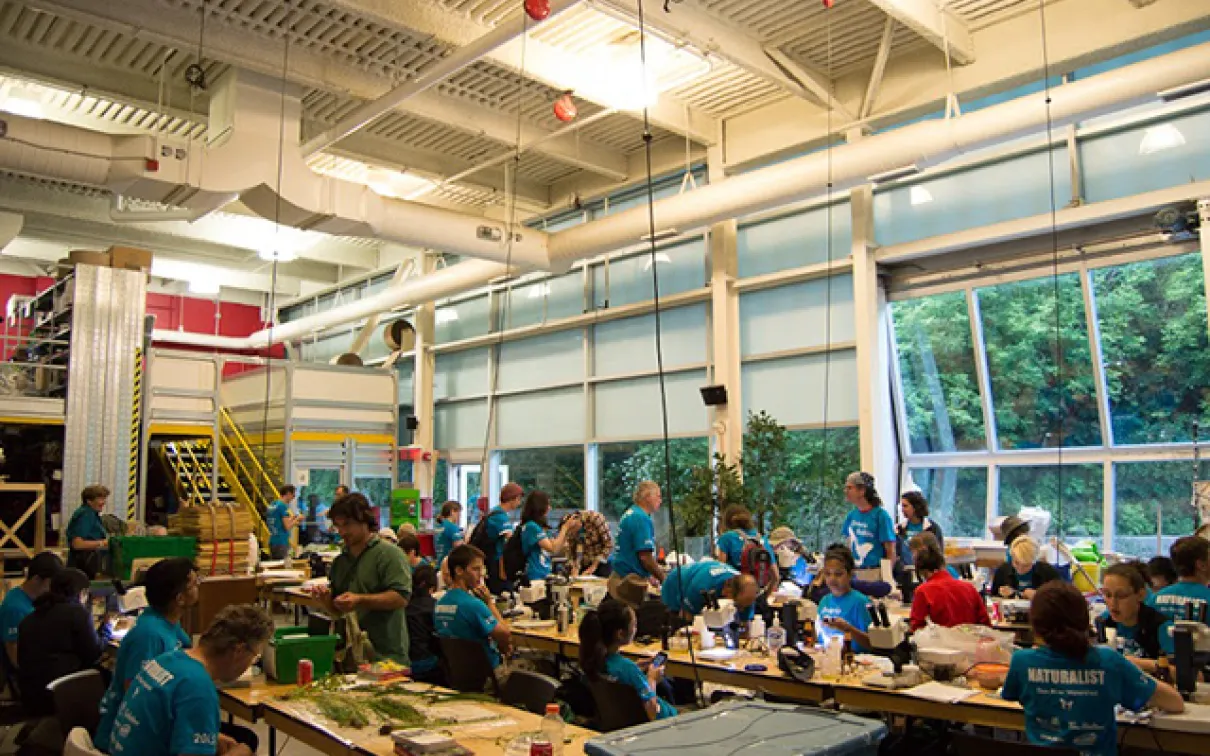Behind the Blitz: Three Young Scientists
Published
Categories
Author
Blog Post
Blog by Nadine Leone, ROM Hands-on Biodiversity Gallery Assistant Coordinator
Do you like insects or aquatic species?
If you answered yes, then you have something in common with Danielle de Carle, Viviana Astudillo and Roegan Vetro, who are three young ROM scientists participating in the Ontario BioBlitz program. Danielle, a Master’s student; Viviana, a PhD student; and Roegan, a University of Toronto graduate, were all able to share some highlights of their experiences last year at the 2015 Don Watershed Ontario BioBlitz event, where they were all members of the intense scientific survey.
During the day, Danielle collected leech specimens as a part of the invertebrates team, and they're the species she is studying for her research at the ROM. But for her, the nocturnal activities of the blitz were some of the most memorable. She spent a lot of time at the mercury vapour light traps that were set up by the entomology team to collect and identify insects. This type of light is a useful tool to attract nocturnal insects, like moths. The bright white surface it creates when combined with a regular old bed sheet that is hung is irresistible to them - they instinctually head towards bright lights, since historically, they used the moon to navigate. The ubiquity of modern lights confuses a lot of these insects, but at the blitz, it gives the scientists a helpful method of discovering the species that are flying around the survey areas at night.
Danielle saw tons of cool insects while spending some time with the light, including huge moths and parasitic wasps that came to visit the bedsheet.
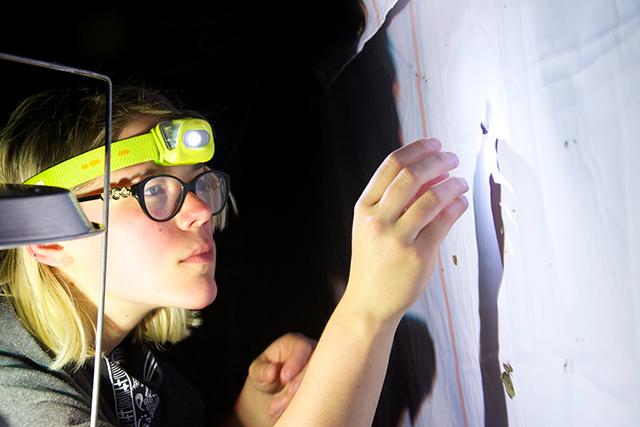
Viviana Astudillo spent her time at the 2015 BioBlitz with the ichthyology team, who were sampling the diversity of fishes in the Don Watershed. Fish diversity tend to vary a lot between different habitats and according to the time of day, so the team had to set nets at multiple sites to get the true picture of the diversity of species in the watershed. Some of the methods that the fish team used to catch and identify their target species included seine nets, gill nets and electrofishing - a technique that is used for fish that are less likely to be caught with nets. Electrofishing involves creating a small shock in the water, which stuns the fish temporarily, making them easy to collect as they float to the surface. The fish are examined, identified, and then released back into the water.
The physical intensity and reward of pulling up the nets was Viviana’s favourite part. She said that the “treasure chest” of different species that emerge whenever a net is pulled up out of the water is thrilling – especially when that treasure includes an uncommon species, or one that the team wasn’t expecting to see. This year, the team hopes to find some evidence of the elusive Redside Dace, which is listed as "Endangered" under Canada's Species At Risk Act.
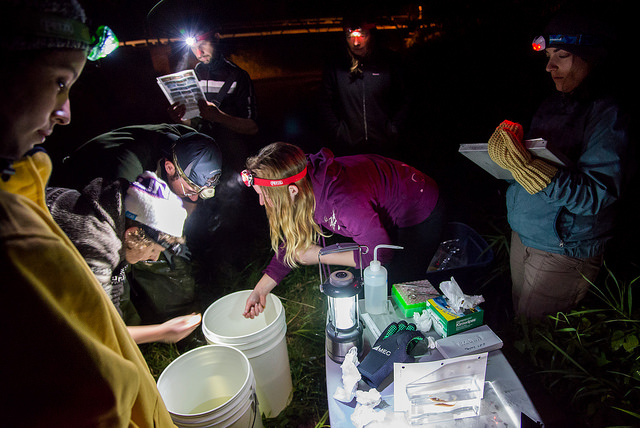
Roegan's time at the Blitz last year was spent collecting insect specimens with the entomology team. One of his favourite experiences was being a part of the species depot, which is a location at the BioBlitz base camp where experts go to analyze and identify some of the specimens they collect. This mostly includes plants, insects, fungi and other small organisms, many of which will be added to the museum’s collections after careful and time-intensive cataloguing that happens well after the 24-hour Ontario BioBlitz is over. The specimens and the data related to their identification and where they were found is then also added to a dataset that is shared publicly online through a huge scientific database, such as Canadensys, where other scientists and members of the public can find and use that information.
Roegan described the species depot as a pretty magical place. He was amazed at how many scientists, from all different disciplines were in the same room, sharing and getting excited about their finds from the day. Teams were talking across tables covered in different piles of leaves or fungi, field guides and microscopes. The atmosphere of shared excitement and enjoyment in the room was a scientist’s dream!
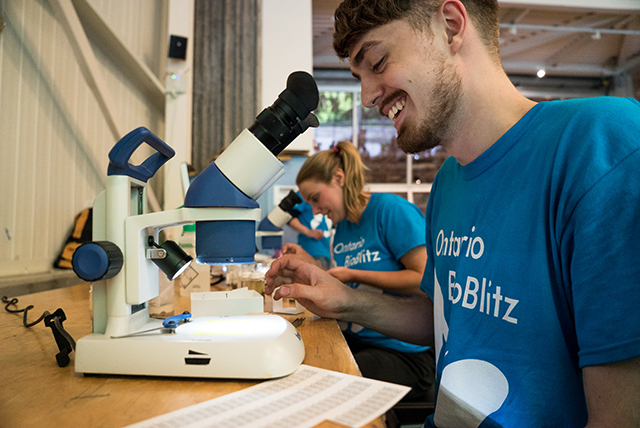
As young scientific professionals, our three interviewees see events like the Ontario BioBlitz as important opportunities for learning from other scientists with a wide range of different skills and experiences, and chances to share and hone their own surveying and identifying skills. It’s also a chance to see how much biodiversity can be found right in our own backyards, and an opportunity to foster some excitement and interest from the participating public in that diversity of species that they encounter in their everyday lives. It's also a LOT of fun.
